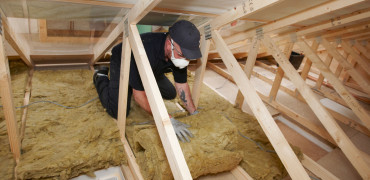From the 12th to the 15th of March, I and colleagues will be attending MIPIM 19 in Cannes in the South of France, the 30th year of this event and I’m looking forward to meeting with like-minded professionals, to find ways to make our built environment more sustainable.
MIPIM (Le marché international des professionnels de l’immobilier) is a 4-day international property event hosted in Cannes, every March.
With the event playing host to some of the most influential and important people involved in building our future, this annual networking exhibition has become a vital event for all in the industry and I feel increasingly a key event in the environmental calendar. Last year, an estimated 26,000 attendees from across the globe visited the exhibition area, networking events and conference sessions.
The event brings together investors, corporations, manufacturers, local authorities, logistics and real estate professionals, who are there to focus on property investment, developments and trends across the globe.
These are some of the world’s most influential players across the different property sectors – from office and residential, to retail, leisure, healthcare, hospitality, sport and industrial.
Over 90% of expected growth in consumption will come from city-dwellers
Modern, sustainable comfort
Our world is fast becoming an urban-based environment, so the way we build and maintain our towns and cities, and the equipment we use to make them modern, comfortable places to exist, is vitally important if we as an industry are to play our part in mitigating the effects of climate change.
The United Nations has already predicted that by 2030, the world’s population will be 8.5 billion and by 2050, this will have increased to 9.7 billion.
We are also likely to see more than 60% of this population on middle-class incomes, living an urban-based lifestyle, with an increase in life expectancy.
This means that over 90% of expected growth in consumption will come from city-dwellers.
The best strategies?
MIPIM is such an international event and highlights the lessons we can all learn from each other. Speakers come from right across the globe, all focusing on the common theme of how to achieve growing urban development while doing all we can to tackle climate change.
For the industry constructing and servicing the built environment, this poses major challenges as we will need to cope with this growth in urban populations and do so in a sustainable way, increasingly in circular way, ensuring materials selected for their ability to be reused, so that we can provide the housing, offices, leisure and infrastructure that people want and need.
Many answers already exist
We are now in an age where energy use, quite rightly, has come into focus as never before and this is where I believe our industry has such an important role to play – and why we make MIPIM such a focus for the company.
Whatever our cities and towns look like in the future we have to reduce the need for energy consumption in the buildings we will use – not forgetting that so many of the older buildings we currently occupy, will still be in use for the next 50 -100 years.
I know that as an industry, we already have the skills and technology to do this through better insulation, modern building techniques and materials, and equipment that is available now and can be widely applied, such as heat pumps.
We need everyone to understand how to use whatever energy a building needs as efficiently as possible and again, I know that we have the technological solutions available and we are able to provide the skills right now to make a real difference.
Finally, we need to continue increasing the amount of primary energy we get from low or zero-carbon technologies, which has already risen significantly – with renewable energy now playing a major part in energy production for country’s across the globe.
Here at Mitsubishi Electric, that’s what we call our ‘Lean, Mean, Green’ approach.
More to be done
Of course there is still more we can do, both as businesses with better management of energy use, and even on an individual basis, if we all act a little more responsible in our own personal energy use.
We will also see new technologies emerge such as on-site battery storage which will help alleviate demand on the grid and provide a store for the renewable energy that buildings with photovoltaics or wind turbines produce.
Cities will also become 'smarter' with heat and electricity flowing in both directions, based upon where it is needed and how it is being produced. We will all be come both producers and consumers of energy, so called ‘prosumers’
And there will be more innovation that no-one has even thought of yet, but we can’t sit back and be complacent. Solutions already exist that can and will make a difference and together, we can effect a co-ordinated approach from industry, government and consumers to build a sustainable society without doing any more damage to the planet.
For me, that is the overriding lesson from MIPIM and I for one will be doing my part in helping as many attendees from around the globe take that message back to their own communities.




